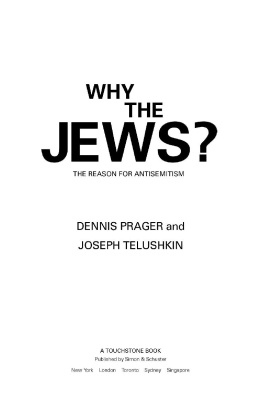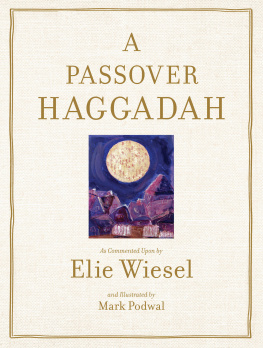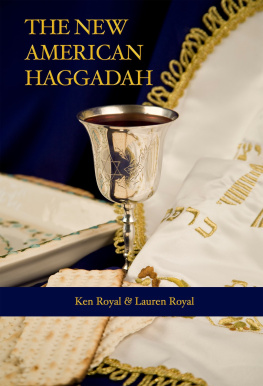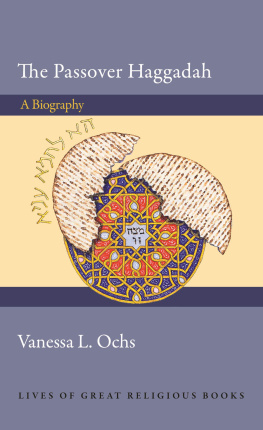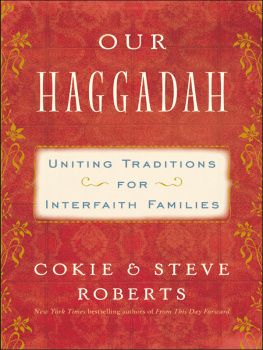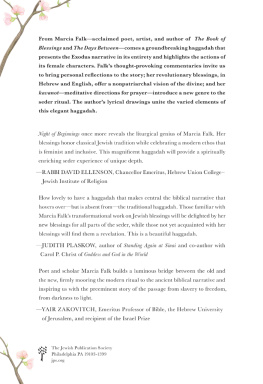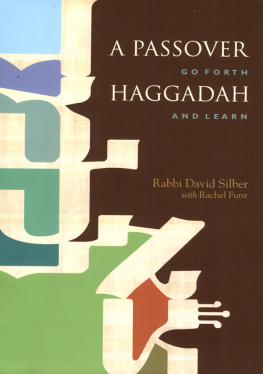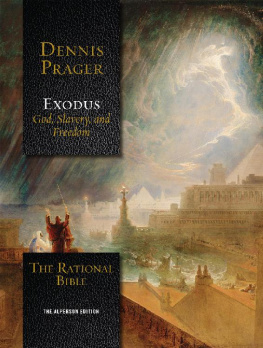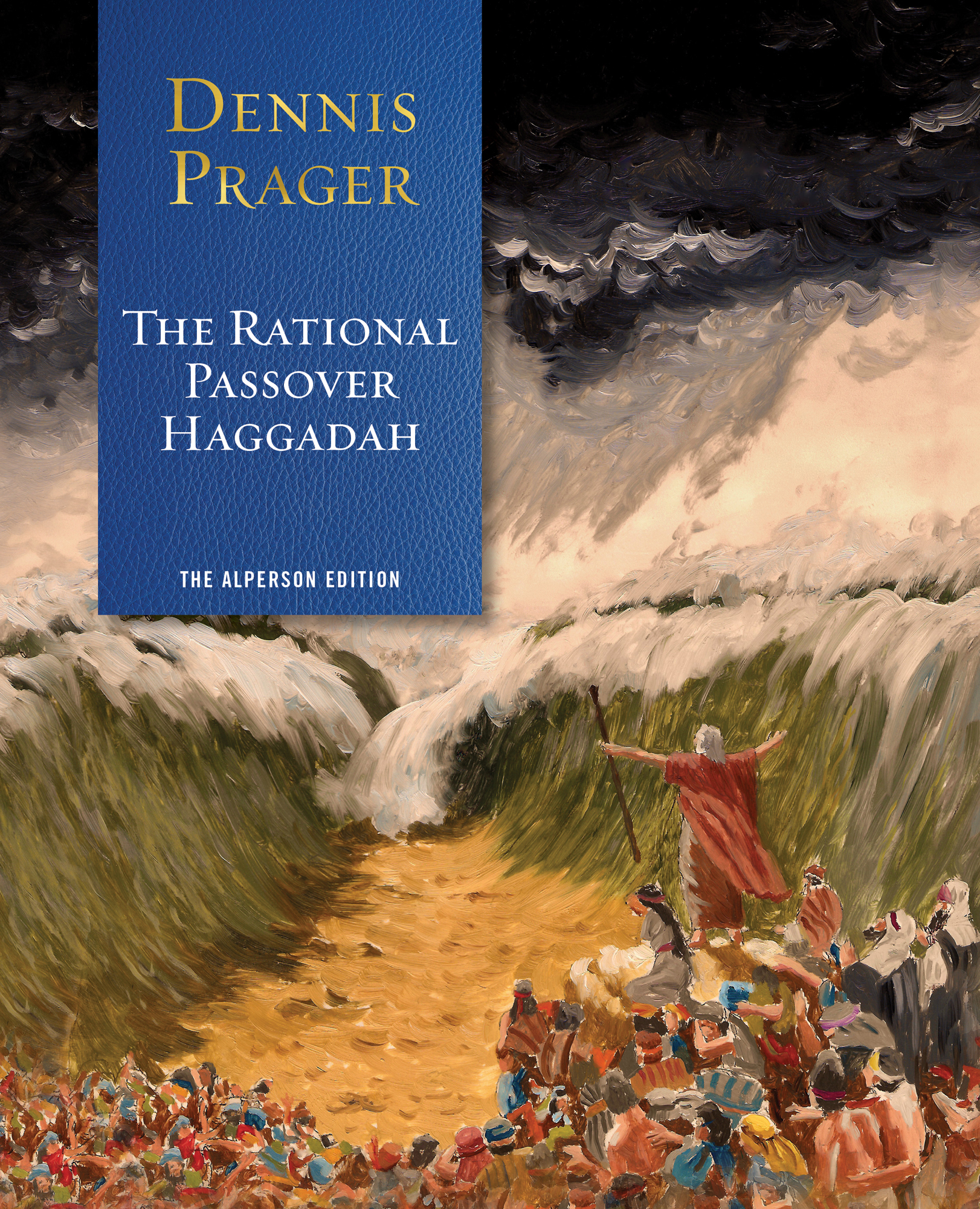Contents
Guide
Dennis Prager
The Rational Passover Haggadah
The Alperson Edition
Copyright 2022 by Dennis Prager
All rights reserved. No part of this publication may be reproduced or transmitted in any form or by any means electronic or mechanical, including photocopy, recording, or any information storage and retrieval system now known or to be invented, without permission in writing from the publisher, except by a reviewer who wishes to quote brief passages in connection with a review written for inclusion in a magazine, newspaper, website, or broadcast.
Regnery Faith is a trademark of Salem Communications Holding Corporation.
Regnery is a registered trademark and its colophon is a trademark of Salem Communications Holding Corporation.
ISBN: 978-1-68451-258-4
eISBN: 978-1-68451-286-7
Cover design by John Caruso
Cover art by Robert Florczak
Library of Congress Control Number: 2021949798
Published in the United States by
Regnery Faith
An Imprint of Regnery Publishing
A Division of Salem Media Group
Washington, D.C.
www.SalemBooks.com
Books are available in quantity for promotional or premium use. For information on discounts and terms, please visit our website: www.Regnery.com.
To Joel Alperson, my friend who made The Rational Passover Haggadah and The Rational Bible possible, to his extraordinary wife, Conny, and to their children, Hannah, Rachel, Aaron, and David, with whom I have a special bond
Introduction
Jews have celebrated Passover for more than three thousand years. It is probably the longest-observed ritual in the world.
I have written The Rational Passover Haggadah for many of the same reasons I wrote The Rational Bible, my commentary on the Torah. Biblical and other sacred texts need to be explained in a rational manner and made relevant. Like The Rational Bible, The Rational Passover Haggadah is meant for every type of Jew and for non-Jews.
But there is an additional reason, specific to The Rational Passover Haggadah. I have attended enough Seders to realize that even traditional Jews steeped in knowledge of Torah and Talmud, let alone more secular Jews and non-Jews, can use help in making their Seder discussions more interesting, deeper, and more accessible to every participantas well as to those who may never attend a Seder.
Therefore, throughout The Rational Passover Haggadah, the reader will find topics marked For Discussion. These topics, related to some part of the Haggadah, raise some great issue of lifeagain, of interest to the religious Jew, the non-religious Jew, and the non-Jew. Best of all, these topics give every participant at the Seder a reason to participate in the Seder, and will hopefully provoke young participants to speak up, or at least pay attention.
This Haggadah is not confined to Passover use, nor is it only for people who attend a Seder. It is intended for year-round use and for those who may never attend a Seder. As the reader can see from the table of contents, the essay topics and discussions are relevant to any time and to any individual. This Haggadah is intended to serve as a guide to life, to God, and to Judaism.
Acknowledgments
As was the case regarding The Rational Bible, The Rational Passover Haggadah would not have been written were it not for the efforts of Joel Alperson of Omaha, Nebraska. With the single exception of the actual writing of this Haggadah, he supervised every aspect of this projectjust as he has with The Rational Bible. Most important, it was his cajoling that convinced me to write The Rational Passover Haggadah.
As with The Rational Bible, he convinced my lifelong friend, the eminent Jewish scholar and writer Rabbi Joseph Telushkin, to serve as editor of the project.
Joel Alperson and my wife, Susan Prager, who edits every word I write, also edited this work.
Aryeh Leifert, an American-born Israeli, served as an editor of the final manuscript. I benefited from his remarkable command of English grammar and from his ability to find typos even after four of us read every word aloud. His expertise in Jewish sourceshe is a licensed Israeli tour guide and ordained rabbiwas also indispensable.
A special thank-you goes to Professor Leeor Gottlieb of the Department of Bible of Bar-Ilan University, the academic editor of The Rational Bible, for his scholarly contributions to this Haggadah.
Barney Brenner of Tucson, Arizona, is a final reader of the manuscript. I marvel at his gift for identifying errors as well as his biblical knowledge.
As with The Rational Bible, Holly Hickman of Dallas, Texas, a committed Christian and deep admirer of Judaism, raised important questions and provided indispensable insights.
Finally, I asked Avner Stein of Orlando, Florida, the final editor of my weekly column, to read the galleys of this Haggadah, and, as usual, his work was indispensable.
Dennis Prager
Los Angeles, California
September 1, 2021
The Passover Seder and the Haggadah
Given that the Passover Seder is the most widely observed Jewish ritual, most Jewsand an increasingly large number of non-Jewsare familiar with the Hebrew word seder. However, few people know what the word means: it is the Hebrew word for order. The modern Hebrew word for OKbsederliterally means in order.
The name order was given to the Passover ritual meal because it is conducted in a set order. The Seder consists of fifteen steps written down in a book called the Haggadah (Hebrew for the telling, because it tells the story of the Exodus from Egypt). Understand these steps and you will understand what the Rabbis wanted to achieve at the Passover Seder. Rabbis refers to the ancient rabbis who compiled the Talmud, the holiest Jewish work after the Hebrew Bible. The Talmud, finalized in about the year 500, is the size of a large encyclopedia. It is comprised of dozens of volumes containing philosophy, theology, legends, stories, and, most of all, arguments and discussions about how to carry out Jewish laws. The earliest date for the Haggadah is 170, but the finalized edition dates to approximately 750.
Why does the Haggadah exist? Because the Torah, the first five books of the Bible, commands Jews to tell the story of the Exodus during the holiday of Passover (see Exodus 13:8 and 13:1415), but it does not specify how to do so. Post-biblical Jewish law did.
Were it not for the Seder and Haggadah, a person would fulfill the Torah commandment in any way he or she chose. Perhaps there would be a holiday meal with family and/or friends at which some people might discuss the Exodus; perhaps a rabbi or a group of Jewish laymen would discuss the Exodus at synagogue; or perhaps one would talk about the Exodus in a phone call with a friend or relative. All of these would theoretically fulfill the Torah law, but none would come close to being a Seder.
In addition, any Jew can fully celebrate the Seder with other Jews anywhere in the world. All Jews recite the same Haggadah and therefore have the same Seder.
Finally, while there is plenty of room for spontaneous discussionas we will see, it is encouragedthe authors of the Haggadah wanted to ensure that Jews incorporate certain aspects of the Exodus story and the Passover holiday at the Seder.
It has worked well. Though Jews were exiled from their homeland for nearly 1,900 years, they not only retained their national identitya unique achievement in human history for a dispersed peoplethey also kept the story of their Exodus from Egypt alive. The Passover Haggadah and the Seder are what made that possible.


